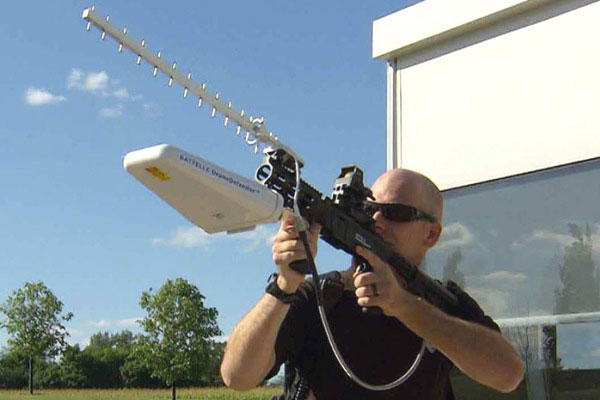The U.S. Army is close to selecting a new style of weapon designed to stop an imminent threat of terrorists using drones to fly bombs into military and government facilities.
Unmanned aerial vehicles, or UAVs, commonly known as drones, have become an effective, reliable tool to help commanders gather battlefield intelligence. They have also exploded on the commercial market, flooding toy stores and hobby shops with inexpensive, multi-propeller drones.
They're small, extremely quiet and fly at high altitudes, making them difficult to detect. A year ago, a DJI Phantom evaded Secret Service radar and landed on the White House lawn.
The Federal Aviation Administration instituted a no drone zone around the nation's capital in July with a 15-mile no-fly zone around Ronald Reagan Washington National Airport, just south of Washington. The FAA expanded the no-drone zone in late December to a 30-mile radius, encircling much of southern and central Maryland and northern Virginia.
"It's a tough mission set because of the size and the altitude of these devices ... you can buy them off the Internet; you can buy them in a store," said Col. Steve Sliwa, director of the Army's Rapid Equipping Force. "They are not really that expensive. The ones that could threaten an installation, they are a little more expensive, but we are not talking about big dollars here."
The REF has teamed up with several Army commands such as the Asymmetric Warfare Group and the Fires Center of Excellence to find a weapon that can detect, classify and disrupt a weaponized drone from reaching its target.
"We want to get to a solution, even if it's is just an interim solution, that we can put in the hands of soldiers ... something that is inexpensive, that soldiers can use to detect, classify and assess what is going on and select a course of action if necessary," Sliwa said.
But finding an effective defense against drones has been no easy task. Conventional small arms, everything from shotguns to machine guns, failed to bring down drones armed with explosives in an early evaluation last January, according to an Army source not authorized to speak on the effort.
The small, fast-moving drones were difficult to hit but also very durable. Detecting their location before they got too close to their intended target also proved very challenging, the source said.
The Army then invited companies to Yuma Proving Ground, Arizona, in September to participate in demonstrations of technology designed to detect, classify and potentially defeat drones, Sliwa said. Army officials tried to develop unique vignettes of how a free-thinking enemy might use drones against U.S. forces on the battlefield, he said.
Sliwa would not talk about any specific system since it is too early in the evaluation.
But DroneDefender, a system made by Battelle, proved very effective, the Army source said.
"It's available now, and it's is effective," he said.
The DroneDefender, a shoulder-fired weapon that looks like something out of a bad science-fiction movie, uses radio waves to cut the link between the drone and its controller, the source said.
Battelle has "temporarily removed information related to DroneDefender while we evaluate the permissible applications of the product under current regulations," according to the company's website.
DroneDefender has a range of "several hundred meters," but it's made much more effective when it is teamed with an Israeli-made radar, the Army source said. The radar system consists of two, 40-pound components and can be carried in two mountain rucksacks.
When assembled, it provides 360-degree radar, detecting drones from "several kilometers" away, the source said.
There are other anti-drone technologies being looked at, but Army officials hope to select a system within six months, Sliwa said.
"We are very close to putting a capability forward," he said. "It should be reassuring for those that are concerned about this ... there is testing going on and I think in the very near future, there will be an equipping decision of some sort to at least get an interim capability to take on the threat."
-- Matthew Cox can be reached at matthew.cox@military.com.




























